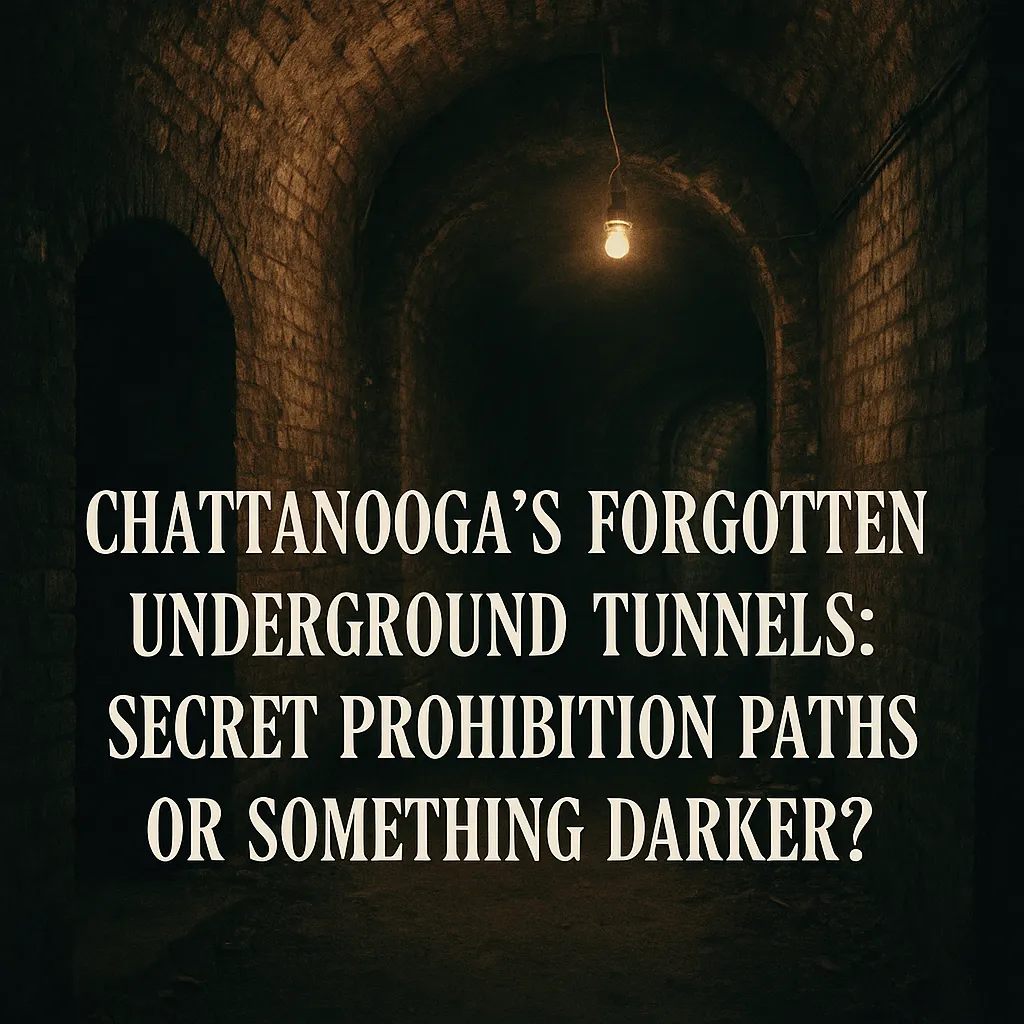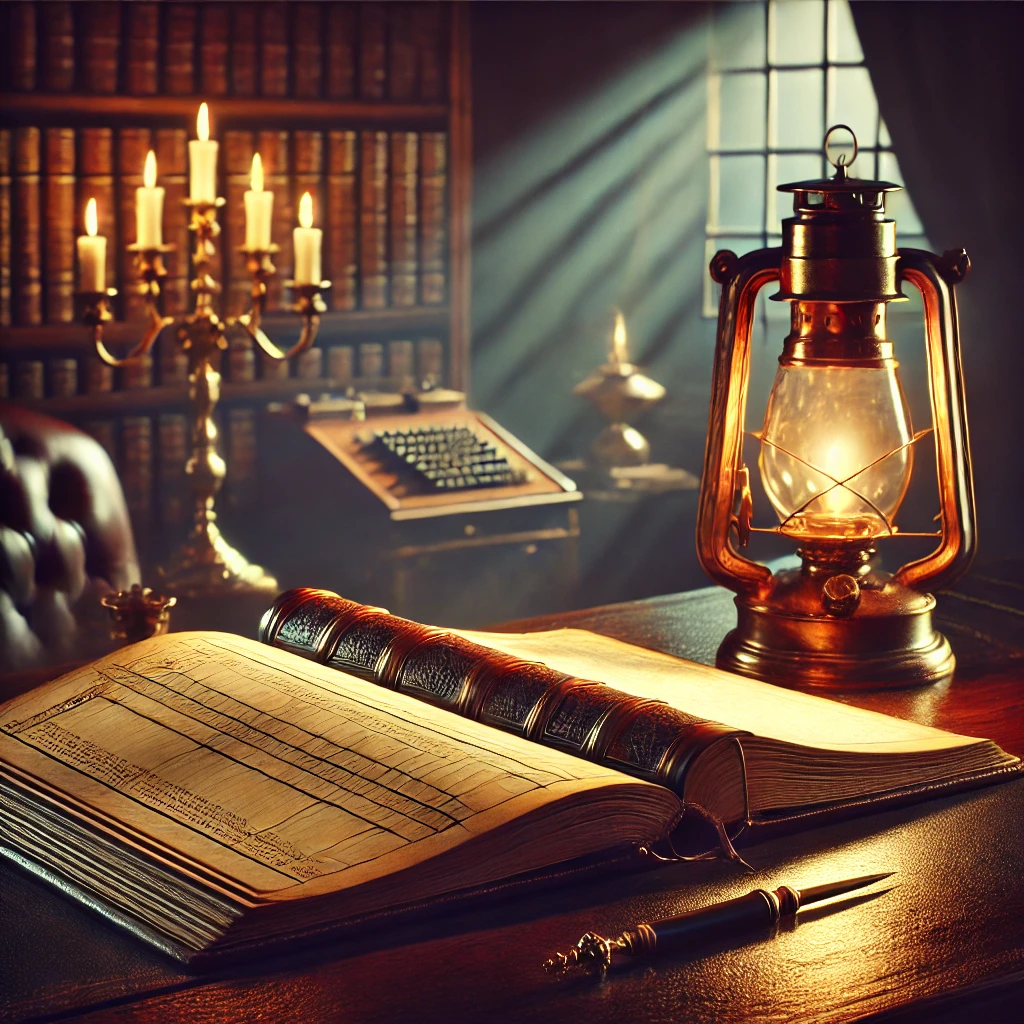
Chattanooga’s Forgotten Underground Tunnels: Secret Prohibition Paths or Something Darker?
Chattanooga’s Forgotten Underground Tunnels: Secret Prohibition Paths or Something Darker?
Introduction
Beneath the bustling streets of Chattanooga, Tennessee, lies a hidden world that few people ever see. The city’s forgotten underground tunnels, once used for a variety of purposes, have remained shrouded in mystery for decades. While some believe these tunnels were created during the Prohibition era to facilitate the secret transport of liquor, others suspect that their origins and use may be tied to something far darker. Are these tunnels just relics of a time when Chattanooga was a hotbed for underground activity, or do they hide deeper, more sinister secrets that have yet to be uncovered? In this blog, we’ll explore the eerie history of Chattanooga’s forgotten underground tunnels, the rumors surrounding their use, and the theories that continue to intrigue both locals and history buffs alike.
Chattanooga, known for its role in the Civil War, railroads, and industrial growth, holds many hidden stories. But its underground tunnels remain one of the most enduring and mysterious aspects of the city’s history. Let’s take a closer look at these secret passageways and what might lie beneath the streets of Chattanooga.
The Origins of Chattanooga’s Underground Tunnels
Chattanooga's underground tunnels date back to the late 19th and early 20th centuries, a time when the city was rapidly industrializing and growing. The exact reasons for the construction of these tunnels are still a subject of debate among historians and researchers. While some believe they were primarily used for industrial purposes—such as transporting coal, goods, and supplies—others point to a more secretive purpose, particularly during the Prohibition era.
The idea of secret tunnels has long been a part of Chattanooga’s folklore, but it wasn’t until the 1920s, during the height of Prohibition, that these tunnels began to gain notoriety. During this time, the production and distribution of alcohol were outlawed in the United States, and Chattanooga, with its location along the Tennessee River, became a key player in the underground liquor trade. Rumors spread that hidden passageways, tunnels running under the city’s streets and buildings, were used to smuggle alcohol in and out of speakeasies, bars, and secret distilleries.
While many of the tunnels are no longer accessible, their legacy lingers, adding to the city’s historical allure. But what exactly was the true purpose of these tunnels, and did they serve as mere passageways for illicit goods, or do they hold darker secrets?
Eyewitness Accounts: Strange Happenings Beneath Chattanooga
While much of Chattanooga’s underground network remains closed off to the public, there are reports from locals and explorers who have ventured into these tunnels over the years. From encounters with unexplained sounds to strange sensations in the air, many have described eerie experiences that seem to suggest that the tunnels are not as abandoned as they appear. Below are some of the most chilling eyewitness accounts:
The Prohibition-Era Smuggler’s Passage
One of the most commonly shared stories is that of an elderly man who claimed to have worked as a smuggler during the Prohibition era. He described navigating the labyrinth of tunnels beneath Chattanooga, moving cases of liquor from secret distilleries to hidden speakeasies. The man described the tunnels as being much larger and more complex than they appeared, with some sections branching off into deep, uncharted passageways that seemed to lead nowhere.
According to his account, the tunnels were dark and damp, and the air was thick with the smell of mildew and mold. As he moved through the passageways, he claimed to have felt an unsettling presence, as if the tunnels themselves were alive. He said that on more than one occasion, he heard distant whispers and footsteps echoing through the darkness, despite being alone. The man said he often felt as if he were being watched, though he could never explain the sensation.
The Ghostly Encounter in the Tunnels
Another account comes from a group of urban explorers who decided to investigate the abandoned tunnels beneath Chattanooga. During their exploration, they reported hearing strange sounds, such as the clanging of metal and faint whispers, despite the tunnels being completely empty. One member of the group claimed to have seen a shadowy figure darting across a distant tunnel entrance. When they approached, the figure disappeared, leaving the group in a state of heightened fear.
The explorers later discovered that this section of the tunnel had once been used as a loading area for industrial shipments, but they were unable to find any logical explanation for the strange phenomena they had witnessed. The eerie encounters left them questioning whether the tunnels had a history far darker than just Prohibition smuggling.
The Vanishing Contractor
Perhaps the most disturbing account involves a contractor who was hired to work on restoring parts of the old buildings near the underground tunnels. While working one afternoon, he claimed to have stumbled upon an unexpected entryway to the tunnels behind a hidden door. Intrigued, he decided to explore, but when he ventured deeper into the tunnels, he became disoriented and lost. Hours passed, and when he finally reemerged, he was visibly shaken.
He later told friends and colleagues that he had found evidence of strange symbols carved into the walls of the tunnels and that he had seen unsettling markings on the floor that seemed to suggest some sort of ritualistic activity. His story became even stranger when he revealed that he had encountered a mysterious figure in the tunnels—an old man wearing dark, tattered clothes who appeared to be guarding a set of metal doors at the end of a narrow passageway. The contractor left the job site shortly thereafter and never returned to the tunnels.
Theories Behind Chattanooga’s Secret Tunnels
Given the strange accounts and the continued mystery surrounding the tunnels, several theories have emerged to explain their true purpose. While some of these theories focus on the tunnels’ role in smuggling alcohol during Prohibition, others suggest that they may have been built for far more sinister purposes. Below are a few of the most common theories:
1. A Network for Prohibition Smuggling
As previously mentioned, the most popular theory is that the tunnels were constructed during the Prohibition era to facilitate the illegal transport of alcohol. Chattanooga’s strategic location along the Tennessee River made it an ideal hub for smuggling operations, with boats and trains transporting illegal liquor through the tunnels. The secret passages allowed for discreet movement of alcohol without detection by authorities, and the speakeasies that lined the city’s streets provided safe havens for the product.
2. A Hiding Place for Lost Treasure
Another theory suggests that the tunnels were built long before Prohibition and may have been used to hide treasure or valuable goods. Some local legends speak of treasure buried by Confederate soldiers during the Civil War, and it’s possible that these tunnels were created to protect it. However, no one has ever found definitive evidence of such hidden riches beneath Chattanooga, leaving the treasure theory to remain speculative at best.
3. Ritualistic or Occult Practices
A darker theory posits that the tunnels were used for ritualistic or occult purposes. Given the eerie encounters reported by those who have explored the tunnels, some believe that they may have been used for ceremonies or secret meetings by groups with sinister intentions. The strange markings, ghostly encounters, and sense of unease reported by witnesses have fueled this theory, suggesting that the tunnels may have been used for something much darker than smuggling or treasure hiding.
4. Military Use or Underground Bases
Some historians speculate that the tunnels could have been used for military purposes, particularly during the Civil War or World War II. Chattanooga’s strategic location made it an important city during these times, and it’s possible that the tunnels were constructed as secret military pathways or bases. However, there is no concrete evidence to support this theory, leaving it open to further speculation.
Conclusion: Chattanooga’s Forgotten Underground Tunnels
The forgotten underground tunnels of Chattanooga remain one of the city’s most enduring and mysterious legends. Whether they were used for smuggling alcohol, hiding treasure, or something more sinister, the true purpose of the tunnels remains unknown. The eerie encounters, strange symbols, and chilling accounts from those who have ventured into the tunnels only add to their allure.
If you’ve ever heard a story or experienced something strange related to Chattanooga’s underground world, share your thoughts and experiences in the comments below. Let’s continue to uncover the mysteries that lie hidden beneath the streets of this historic city.
